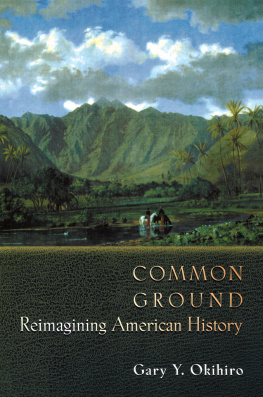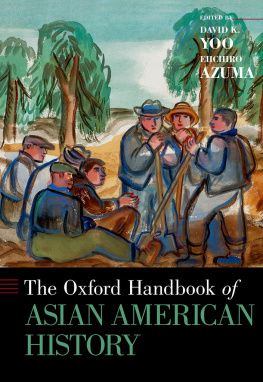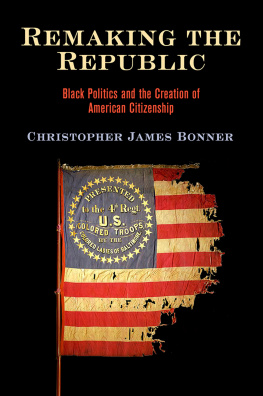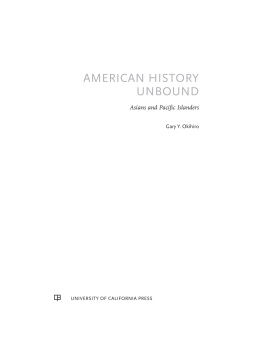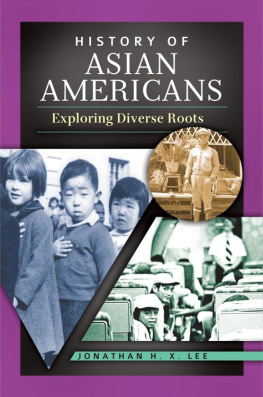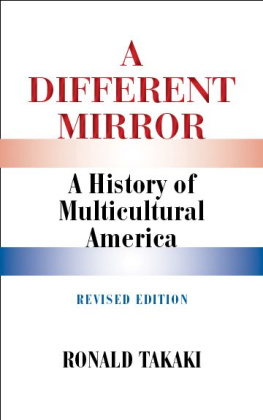Copyright 2001 by Gary Y. Okihiro
Published by Princeton University Press, 41 William Street,
Princeton, New Jersey 08540
In the United Kingdom: Princeton University Press, 3 Market Place,
Woodstock, Oxfordshire OX20 1SY
All Rights Reserved
Library of Congress Cataloging-in-Publication Data
Okihiro, Gary Y., 1945
Common ground : reimagining American history / Gary Y. Okihiro.
p. cm.
Includes bibliographical references and index.
ISBN 0-691-07006-7ISBN 0-691-07007-5 (pbk.)
eISBN 978-1-400-84436-4
1. United StatesHistoryPhilosophy. 2. National characteristics,
American. 3. MinoritiesUnited StatesSocial conditions.
4. Asian AmericansSocial conditions. 5. Group identityUnited States.
6. SubjectivitySocial aspectsUnited States. 7. Binary
principle (Linguistics) 8. Pluralism (Social sciences)
United States. 9. United StatesEthnic relations. 10. United States
Social conditions1980-I. Title.
E175.9.O38 2001
973dc21 00-049112
https://press.princeton.edu/
R0
PREFACE
I remember the joys of playing cowboys and Indians as a boy. It did not seem strange, at the time, that my friends and I lived in Hawaii on the island of Oahu in a sugar plantation camp with cane fields on one side and a huge sugar mill on the otherit didnt seem incongruous. We would mount our steeds made of old broomstick handles and ride off into the sunset. Of course, we would quarrel over who would be the cowboys, and who the Indians. We patterned ourselves after the Lone Ranger, although playing Tonto, with his quiet ways, his painted face, and his buckskin clothes, had its subversive appeal. Who was that masked man?, Hi yo, Silver, away!, and Kimo sabe! were expressions we mimicked from the T.V. show. Our role-playing in that make-believe Western came to an end only when our mothers called us to eat our dinners of Spam and rice.
Playing Indian, historian Philip J. Deloria reminds us, is as American as apple pie or Spam and rice. It might have begun with the Boston Tea Party in 1773 when the Sons of Libertywhite men cross-dressed as Indianswhooped up war cries, boarded tea ships, dumped the cargo into the harbor, and performed in what serves to this day as a theater of the rebellion that defined the national character and subject. The creation of that American, as opposed to the European colonist in America, was as much a repulsion of the Indian savage as an embrace of the Indian, who exemplified freedom, innocence, and the spirit of the New World. Of course, in my time, playing Indian simultaneously meant playing cowboy. They were two sides of the same coin, like the binary Indiansavage and noble savageplayed by white men in red-face at a British-inspired tea party. (The tea, I should interject, came from Asia.) And cowboys were almost always the good guys, and Indians, the bad guys, who invariably lost the wars.
Common Ground is about the creation of the American character and subject. I have conceived this work as an uneasy and troubling companion to general considerations of American history, which, it seems to me, are frequently designed to shape a national identitythe Americanthrough a singular narrative of the past. I intend to question the all-too-often easy and smooth flow of that story by asking how the minority subjects, especially Asian Americans, help us to rethink our notions of who we are as a people and nation. The core of those ideas of citizenship and history consists of normative assumptions about geographies, race, gender, and sexuality and the binaries that comprise and sustain them. I take up each of those topics in the chapters of this book, and attempt to show that they are inventions of our imaginaries, albeit with real impacts upon our behaviors and lives, and that they are intimate and knowing partners. They form couplings and are inseparable in American history, albeit with peculiar meanings and manifestations, whether visiting them during the late eighteenth, nineteenth, or twentieth centuries.
Geographies are writings upon the earth, like maps that locate and name places and fences that mark boundaries and convert spaces into properties. The attributions of West and East, the principal geographical binary in American history, are my concern in . As manly inscriptions upon (womanly) virgin soil, geographies come with correlates, natures such that the West, or the American interior and heartland, is commonly associated with renewal, plenty, homogeneity, stability, union, citizenship, and whiteness; and the East, with the past, poverty, heterogeneity, instability, disunion, alienness, and nonwhiteness. Those geographical binaries I show through a consideration of the minority and Asian American subject to be inventions that are raced, gendered, classed, nationalized, and sexualized and that are false distinctions and mere illusions.
Racializations too are man-made inscriptions, this time upon the human body, and like geographies they form grids that mark the self in opposition to its other. Segregation and spatial separations were attempts to police those creations of difference and preserve the principal racialized binary in America of white and black. Even as West and East come with characters, white and black carry valuations of good and evil, rich and poor, civil and savage, man and woman, citizen and alien, normality and deviance. The Asian American subject, imposed upon that binary, required a revision of categories from white and black to white and nonwhite that is equally arbitrary and hierarchical. explores that terrain and discovers a more cluttered territory of racializations than the standard road maps appear to present.
Asians embody the geographies of the East and nonwhiteness, and the gendering that delineates woman. The Asian body, as argued in , reveals that there are within the American imaginary masculine races and feminine races, and normative genders and deviant genders. White manliness in late-nineteenth-century America was made, in part, in the nations imperial project in Asia and the Pacific and in the conquest by remasculinized white American men of feminized Asian and Pacific peoples, even as white womanliness and the new woman were enabled by Asian American men domestics, who performed feminine duties and, like women, were passive and asexual. Those imagined characteristics that accompany the binary of man and woman are genderings, geographies, and racializations, as the minority and Asian American subjects show, and are performances that script the privileges of man over woman, West over East, white over nonwhite.
White manly heterosexual drives constituted correlates, within nineteenth-century representations, of lesbians and nonwhite women, and of white womanly sexual repressions with gays and nonwhite men. The Asian body, as outlined in , is marked by a cluster of natures, including those of geography, race, gender, and sexuality, and by the binaries of the West, whiteness, manliness, heterosexuality, and the citizenas opposed to the East, nonwhiteness, womanliness, homosexuality or deviant heterosexuality, and the alien. But those invented categories and contrasts, including the binary of heterosexual and homosexual, point to the interconnectedness of the self and the other (they stand in opposition and mutual dependence), and to the fraught and changeable shorelines that at once separate and link supposed poles.

